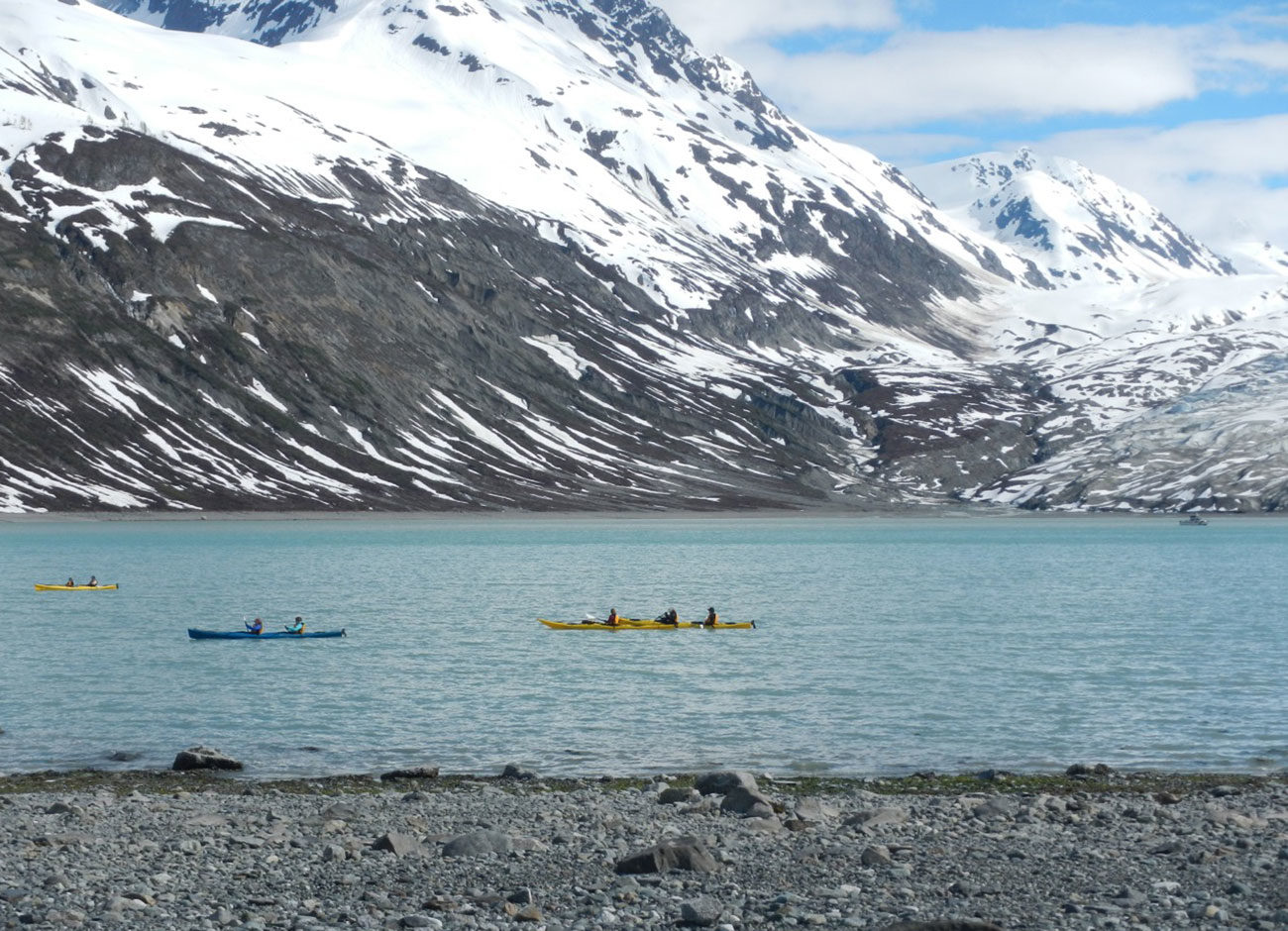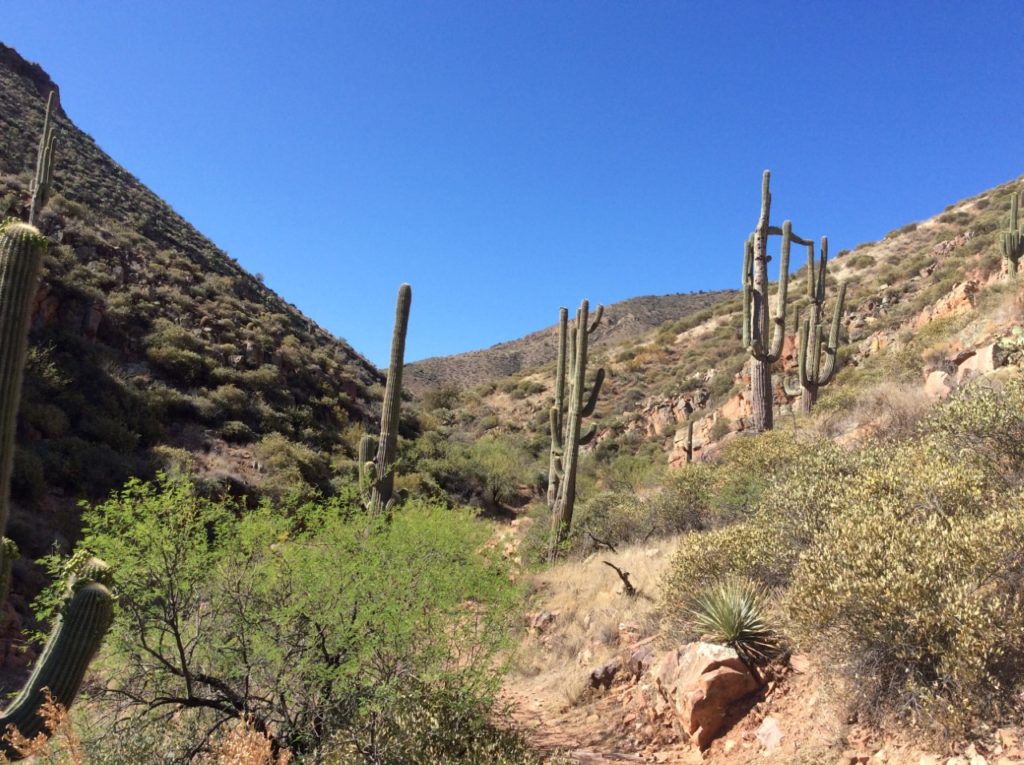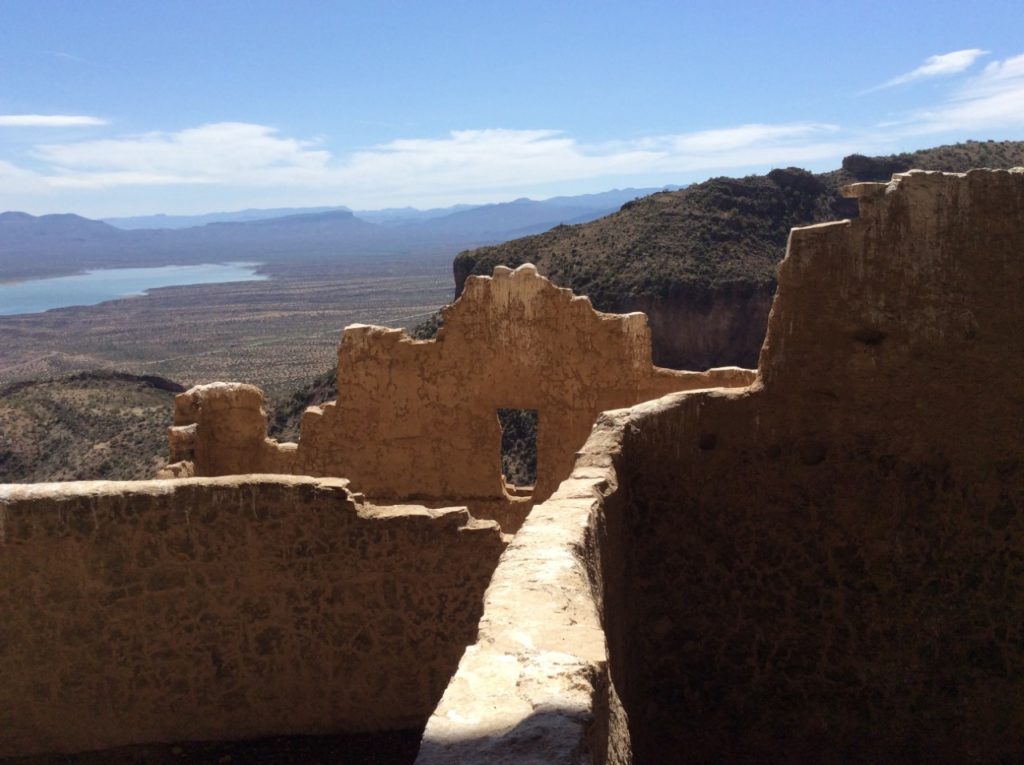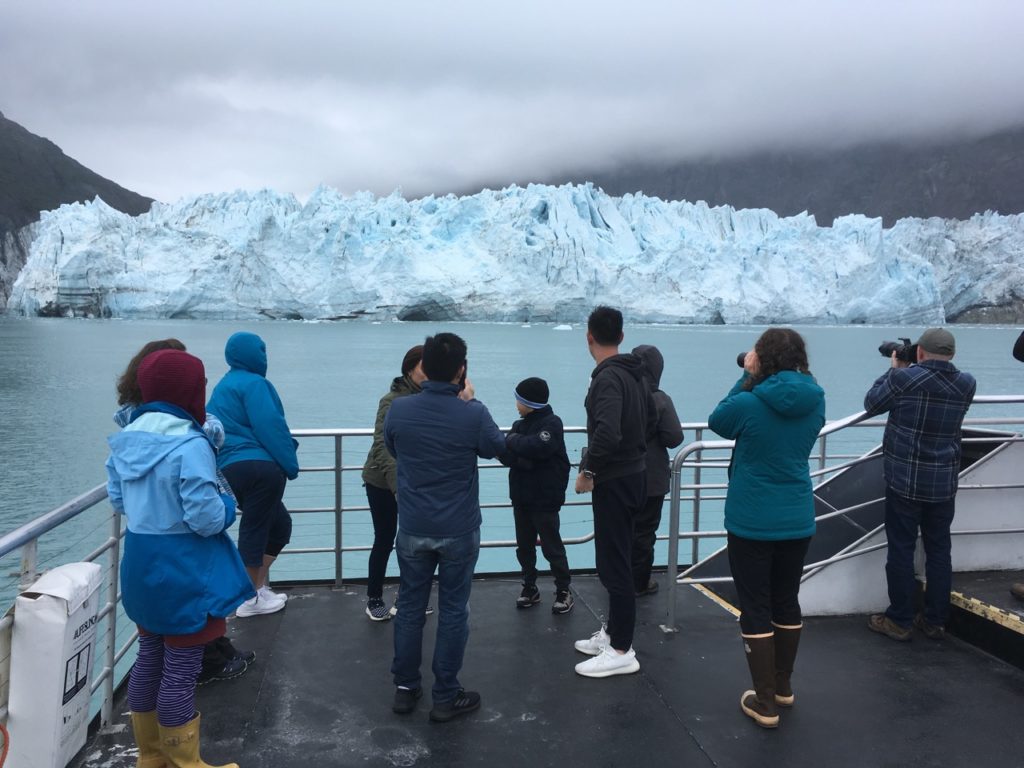Easy to Love, Hard to Manage

Most every person can tell you their national park—the red-walled canyon they road-tripped to as a kid, a campground they prowled during college, a mossy canoe lake they visited on 22 separate occasions with scouts, or the high mountain meadow that settled into their soul one formative and splendid spring.
Although he has great memories at some of the “rock star” parks—Glacier, Saguaro, and Arches—Mark Brunson tends to connect to the smaller ones—Fossil Butte, Tonto, and Fort Bowie. Brunson is one of several experts from the S.J. & Jessie E. Quinney College of Natural Resources whose research informs the U.S. National Park Service. Modest national monuments and national historic parks were often set aside for historical or archaeological significance rather than for scenic bling, he says.
“What makes me love them even more is that often there’s hardly anyone there. It’s easier to appreciate what a gift the national park system is,” he says.
National parks are easy to love—they are harder to take care of. It isn’t a matter of wanting to protect these natural treasures; most people do. It’s the on-the-ground knowledge—understanding how to manage, maintain, and repair these chronically underfunded, intricate ecological and social systems—that’s harder to accomplish. What happens, for instance, when your remote back country campsite goes digitally viral? What repercussions will a boundary change have on the wildlife? How does the ecology of a site change when crowds get too loud, messy, or big?
“Our parks confront so many challenges these days from increasing visitation to aging infrastructure to external pressures like air pollution and climate change and encroaching development, that make it harder to protect the natural and cultural features that the parks were created in order to conserve,” says Brunson.
“To be a manager in the national park service you have to, by definition, be resilient,” says Christopher Monz, professor of recreation resources management in the Department of Environment and Society (ENVS).

At Tonto, part of Brunson’s task was to evaluate the current condition of natural landscape, and potential threats to the natural setting such as wildfires fueled by exotic human introduced grasses. Photo courtesy of Mark Brunson.
Managers address whack-a-mole issues that surface when millions of people load cars, pitch tents, hit trails, and conquer peaks in places that don’t have adequate funding but do have delicate ecosystems. These are complex places, after all, where ecology meets history meets social adoration and occasional ignorance. National parks in the United States have a mandate that seems paradoxical—to conserve the scenery, natural and historic objects, and wildlife, and to provide for the enjoyment of such as will leave them unimpaired for future generations. In other words, to have their cake and eat it too … plus save a piece for the grandkids. But Monz sees it as a challenge, not an irreconcilable charge.
“Finding an equilibrium in national parks—between sustaining the environment and allowing people to use and enjoy them—is a bit of a microcosm of what we are trying to do on planet earth,” he says. “It’s a good tension for us to experience and learn from. Humans inevitably cause disturbance to natural systems. But we can’t let ourselves completely take over nature, because connecting to the natural world is such a fundamental part of the human experience.”
Monz’s research is designed to find that balance. He wants to understand why visitors behave in ways that may have negative impacts on natural features of parks with the goal of helping park managers find solutions by influencing how people behave.
“Finding an equilibrium in national parks—between sustaining the environment and allowing people to use and enjoy them—is a bit of a microcosm of what we are trying to do on planet earth.” – Christopher Monz
At Rocky Mountain National Park, a short drive from the Denver metro area, sits Bear Lake, a picturesque high elevation basin ringed by deep green pinyons and rough granite cliffs. It’s a trail head for day hikers, a scenic point for picnickers, and the start for multiple treks leading far into the back country of the park. Since the 1970s, recreational use has been ballooning, creating unlikely traffic congestion at the 10,000-foot site. After expanding the parking lot, managers implemented a shuttle from the visitor center, hoping to alleviate the issue. But with each accommodation for more cars came more crowds, leading to trickle-down problems for trail erosion, water quality, animals, plants, and for the people who came expecting a dose of fresh air, natural scenery, and back country isolation.

The scenic Sonoran Desert as seen from a cliff dwelling in Tonto National Monument. Photo courtesy of Mark Brunson.
“We are really good at moving people around,” says Monz. “Managers were able to solve one issue, and then faced another when the problem became resource impact at the destination.”
To tackle this, Monz’s team quantified the crowding at the lake and evaluated the park’s capacity. They developed thresholds for acceptable conditions and helped park managers consider the timing of how people use the area, how to present alternative locations that might offer similar recreation experiences, and to develop communication strategies about crowding conditions to help people manage their expectations and modify their choices. Monz has worked on projects like this one at more than 30 national parks around the country and world.
The infrastructure in most U.S. national parks—roads, campgrounds, trails, parking facilities—were built for a different era, says Monz. In the 1950s, when many parks were being developed as recreation destinations, outdoor recreationists had different demands and held different expectations. (And there were fewer recreationists.) Motivations were more likely to be about reconnecting with nature, not to selfie it or check it off a 10-item bucket list. Managers today need to understand people’s evolving approach to protect the ecology of an area, and to meet human demand, Monz says.
Sometimes those motivations catch a researcher by surprise. At Glacier Bay National Park in Alaska, Monz’s team surveyed several types of visitors—those who paddle from choppy alcove to stunning outcropping in small sea kayaks, and those who crowd onto 75-person boats to admire sapphire glaciers and—if they are lucky—catch sight of breaching whales. They used GPS to monitor where study participants moved in the park, how long they stayed, and asked what the visitors thought about the condition of the resources they saw, what they expected to see before they came, and what they remembered after they left. Monz found that most people coming to Glacier Bay shared a major motivation—a desire for adventure. And both types of visitors reported finding what they came looking for, even if the way they experienced Glacier Bay was considerably different.

ENVS researcher Christopher Monz’s team queried visitors of Glacier Bay National Park in Alaska about their adventure seeking experiences. Photo courtesy of Monz.
“This information helps park managers make decisions about what experiences to provide, how many people can sustainably use the area, how to issue permits, and even what expectations and obstacles they may face in the next few decades,” says Monz. Data can inform decisions about national park management, he says, but “decisions aren’t made in a vacuum.” Politics affects outcomes, too.
Brunson’s research helps park managers find ways to manage their parks in cooperation with their neighbors such as national forests and private landowners to enhance conservation efforts. His work is broad—it considers activities on adjacent lands such as livestock grazing and wildfire prevention, as well as climate change. Since 2011, Brunson’s team has conducted Natural Resource Condition Assessments for 28 National Park Service units from Oklahoma to Arizona and from the Rio Grande to the Little Bighorn National Monument in Montana. Managers tell Brunson’s team which of their resources are most critical to their mission as a park. The team collects data about these resources such as night sky and natural soundscapes to geologic features, streams and springs, and plant and animal species information to evaluate how far current conditions have strayed from what would be considered “natural.”
“Our parks confront so many challenges these days from increasing visitation to aging infrastructure to external pressures like air pollution and climate change and encroaching development, that make it harder to protect the natural and cultural features that the parks were created in order to conserve.” -Mark Brunson
Brunson also provides information about factors that might be causing a departure from natural conditions. Just outside the gates into Saguaro National Park lies the sprawling city of Tucson, Arizona. As the city expands, development cuts off migration routes for animals such as white-nosed coati and mountain lions that naturally travel between the park and surrounding mountain ranges. Meanwhile, park managers are working hard to fight an invasive, non-native grass called buffelgrass. Originally brought to the area from Africa in the 1930s as a drought-tolerant forage for livestock, it’s also very prone to fire in an ecosystem that didn’t experience wildfires until more recently. The invasion now threatens the great cactus forest—the prime reason the park exists.
What he’s learned from the process is to protect the parks we love, we need to not only understand and address how people impact them on the trail or in the campground, but also how people affect them with activities occurring outside the park, he says. It’s a complex process that involves more than just soil quality evaluations and car counts alone.
Whether it’s tracking visitation patterns on public lands with data from social media platforms, studying economies in gateway communities, or exploring how changes like views of the night sky affect a visitor’s experience, ENVS researchers provide the analyses park managers need to keep national parks functioning, beautiful, “natural,” and ready for the next generation.





